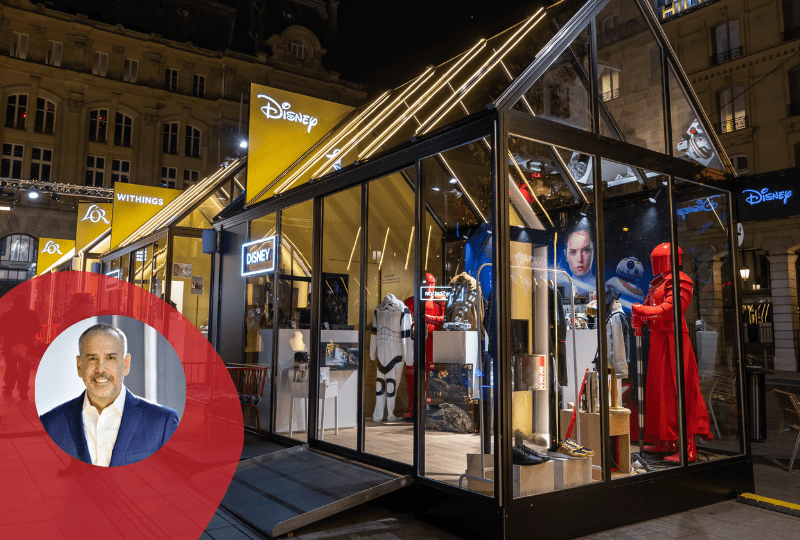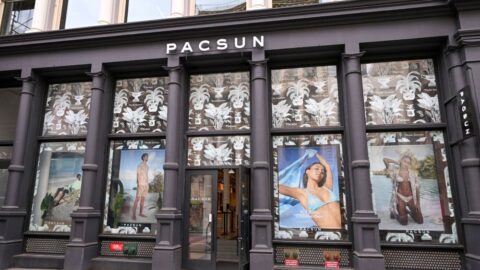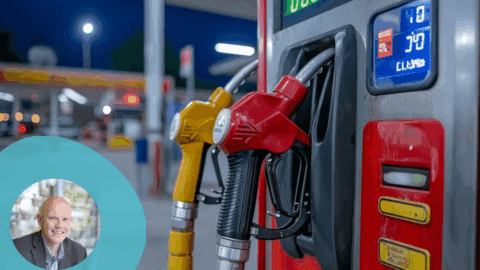Pop-up storefronts are a trendy strategy for retail brands, but they’re far from a new concept. Fish markets, holiday fireworks stands and even old-timey salesmen during the early to mid-1900s all incorporated the mobile, temporary nature of pop-up shops into their sales models. The only difference between then and now is the technology that brands can use to take these offerings to the next level.
Modern pop-ups are a low-cost, high-reward option for both established and emerging brands. By thinking outside the box and investing in the right technology, brands can use pop-ups to experiment in ways that are impossible with traditional storefronts.
Pop-ups are Endlessly Customizable
Shopping should never feel like a chore. That’s why retail designers spend millions to cultivate a shopping experience that channels novelty, surprise and delight. Pop-up shops extend the concept even further because they have the ability to generate all three of these characteristics at a fraction of the cost of a permanent store.
Additionally, retailers are constantly searching for ways to reduce capital costs, a high percentage of which originate from inventory and storefront expenses. Pop-ups allow retailers to provide unique experiences while keeping overhead to a minimum. They also revitalize idle retail spaces and connect local communities and shoppers who live nearby.
Pop-ups come in all shapes and sizes, which makes them a versatile fit for both national retailers and less established brands. For example, Nike used a series of pop-up events in major U.S. cities to celebrate Air Max Day and give customers exclusive access to new products. For Nike, the temporary nature of pop-ups helped generate hype — customers knew the limited-edition products would be here today and gone tomorrow.
At the same time, the experiences of retailers like Word Up Bookstore show how pop-ups can prove valuable for startup businesses. In 2011, Word Up Bookstore opened as a one-month pop-up in New York City’s Washington Heights. The bookstore filled a gap in the community by providing a space for cultural expression and education. After a rent spike forced Word Up to leave the location, the neighborhood banded together to raise $60,000 and help the bookshop reopen full-time in 2013. This type of grassroots community-building was only possible because of the low barrier to entry that pop-up shops provide.
Launching a Successful Pop-up: Keys to Success
Pop-ups’ versatility, cost-effectiveness and potential for virality make them a useful strategy for storytelling and increasing the relevance of a retail brand. While there’s no single way to run a successful pop-up, there are several considerations to keep in mind before planning your first one. Here are three tips to help you get you started:
1. Understand your expenses.
While pop-ups provide lower barriers to entry and great ROI, they still require startup costs. For example, there’s the cost of building out the store, which includes the store’s actual design and décor as well as fees like rent, utilities and insurance. Then there are marketing costs — the mobility and novelty of pop-ups mean you need to heavily promote your new presence so local shoppers are aware of new locations. And finally, there’s the staff and technology at the store — in many cases, finding ways to optimize staffing is key to reducing overhead costs.
You can accomplish this by investing in omnichannel technology that eliminates the need for a bulky and antiquated NCR-type cash register. Employees can service customers on mobile devices while engaging with the space rather than remaining idle behind a counter. An omnichannel mobile POS also gives associates access to inventory information, which prevents them from leaving the customer’s side to see if a specific item is in stock. You don’t want customers to feel like your pop-up is just a smaller version of your regular storefront. Mobile technology can help differentiate your pop-up offering and turn it into a unique experience.
2. Make a splash with a unique collaboration.
Pop-ups need to generate buzz — and the right collaborative partnership can prove critical. The trick to an effective collaboration is to identify a brand with a distinct product or service and with values and audience that complement yours.
For example, Adidas and Gucci held a two-day pop-up in Los Angeles to celebrate the launch of their joint collection. Both brands are major players in fashion but occupy different industry segments. Their joint collection — and retro street party pop-up — found the overlap between these worlds. The event consisted of 1980s-inspired performances and decorations that aligned with Gucci’s aesthetic, while the basketball court and bleachers gave a nod to Adidas’ roots. Gucci and Adidas created a wholly new experience by combining the most complementary traits of both brands — something your brand should keep in mind when scouting a potential partnership.
3. Use pop-ups to build stronger customer relationships.
The benefits of your pop-up don’t have to end after you close up shop. Identifying successes and failures enables you to improve future events and apply insights to your primary storefront. But to capture these insights, you have to interact with customers beyond the lifespan of your pop-up and gather relevant data about their experience.
Pop-up staff (who can move throughout the event space using technology) should interact with customers throughout their visit. After a customer’s purchase, employees should offer to email their receipt rather than print it. After the event, you can then reach out to customers to solicit actionable feedback and nurture the relationship.
Although brands invest millions in online ad campaigns to secure customers’ emails, social ads are hit-and-miss — there’s no guarantee someone who clicks the ad will continue to interact with your brand. Pop-ups provide an opportunity to connect with invested customers who have gone out of their way to interact with your brand in person. Capturing these high-quality leads before they leave the pop-up space pays dividends.
The Pop-up Feedback Loop
Pop-ups allow your brand to experiment in ways that don’t break the bank. For example, if your brand wants to expand into a new market, you could hold a pop-up in the new location instead of investing in a full storefront. From there, you benefit from the pop-up feedback loop: hold a pop-up, evaluate the results, take insights from the pop-up back to your main locations and repeat.
In this system, pop-ups and traditional store locations continuously feed into one another, giving employees access to relevant data from both settings. Add online retail options like branded mobile apps and your customers now have the full array of channels to shop your brand according to their preferences. The versatility of this pop-up store strategy, coupled with the right technology, gives your brand a powerful way to reach new audiences with a seamless customer experience.
Phil Granof is an award-winning marketing executive with over 20 years of experience in marketing strategy and brand development. Prior to NewStore, Granof was the EVP and Chief Marketing Officer of Black Duck Software, a global enterprise software company, where he successfully repositioned the entire brand, built a modern marketing organization and simultaneously redefined an industry. As Chief Marketing Officer of NewStore, Granof combines his analytical and data-driven approach to marketing with a creative vision, overseeing demand generation, product marketing and management, brand development and corporate communications.








